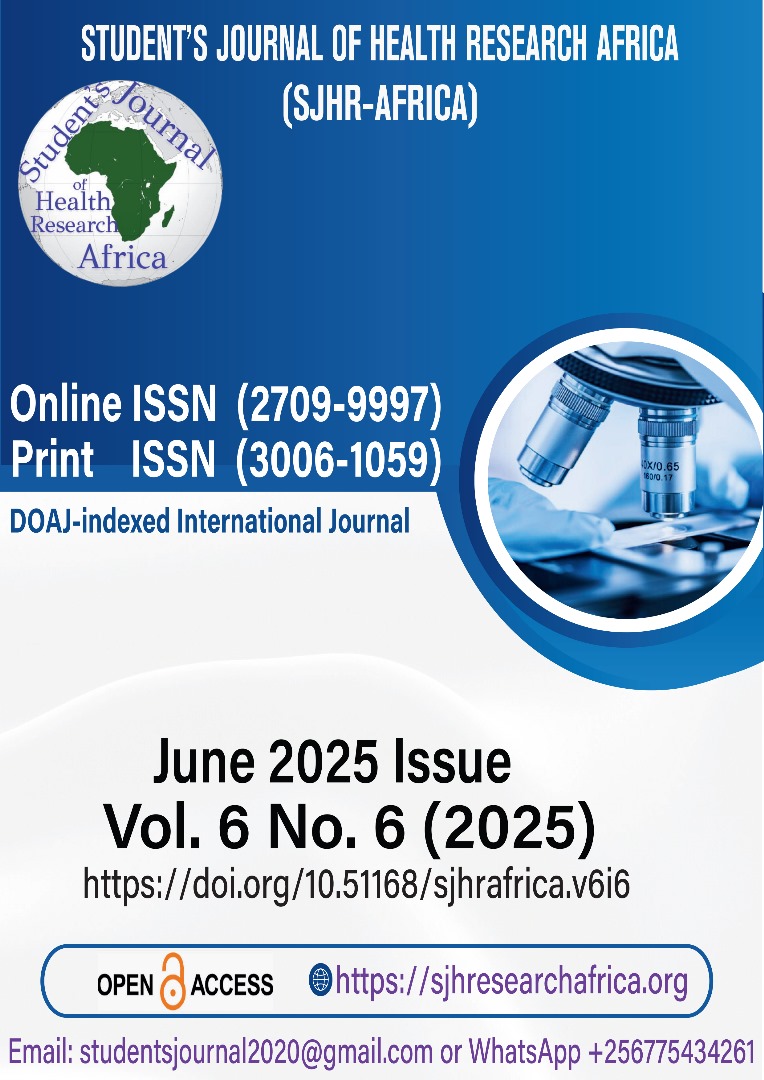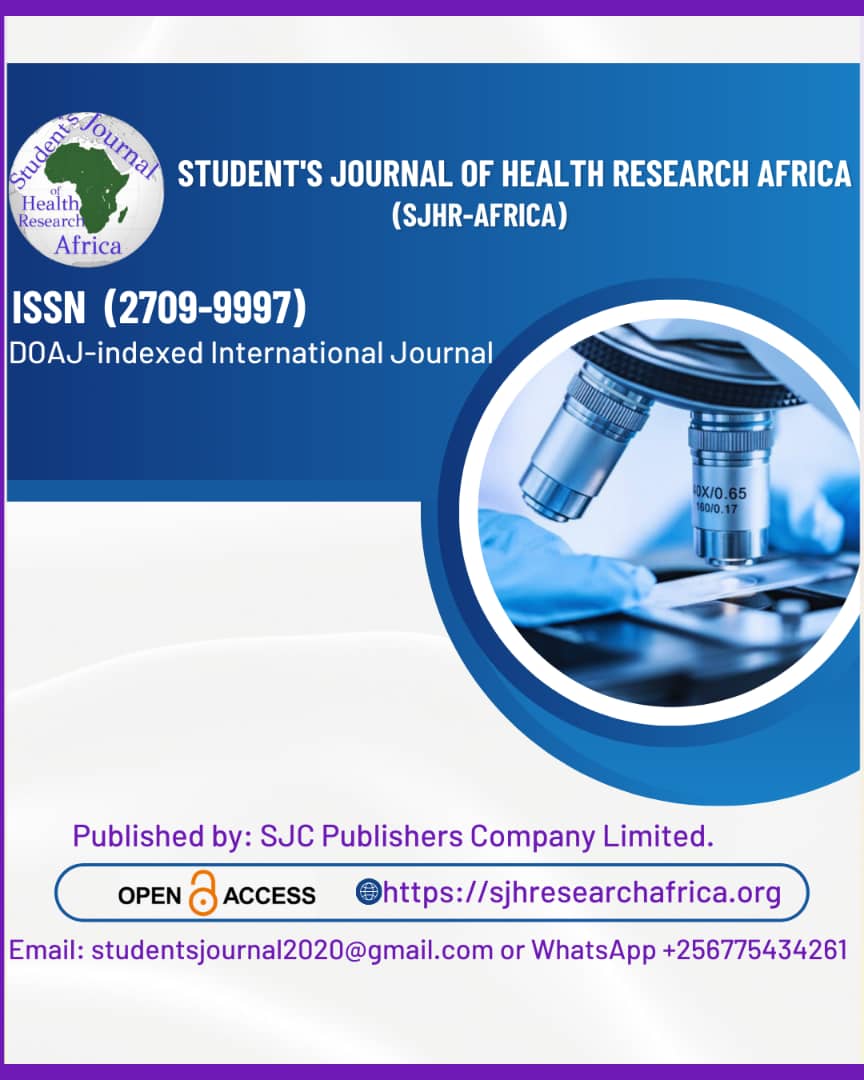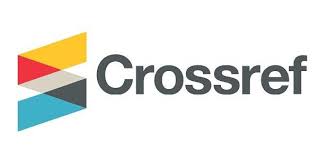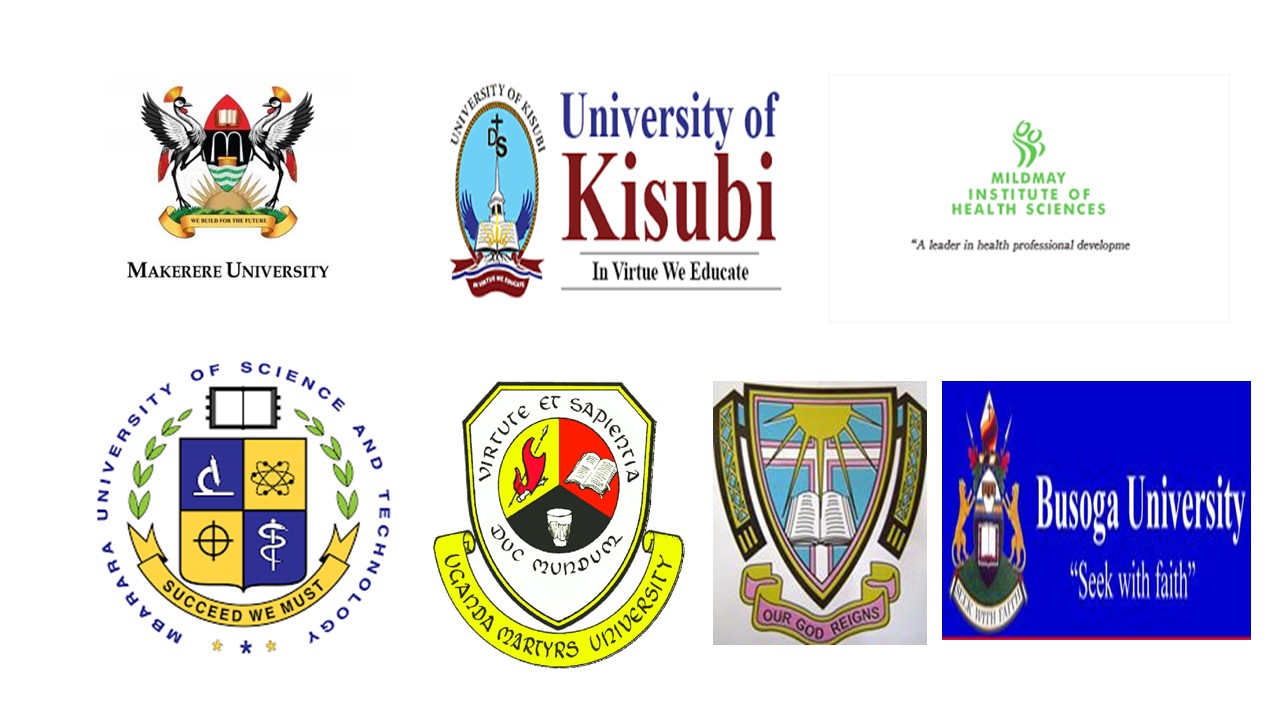Efficacy of CT-Guided Lumbar Chemical Sympathectomy for Pain Relief and Ulcer Healing in Patients with Thromboangiitis Obliterans and Peripheral Arterial Disease
Lumbar chemical sympathectomy for lower limb pain and ulcer management
DOI:
https://doi.org/10.51168/sjhrafrica.v6i6.1562Keywords:
Lumbar chemical sympathectomy, thromboangiitis obliterans, peripheral arterial disease, ischemic pain, ulcer healing, CT-guided interventionAbstract
Background: Lumbar chemical sympathectomy (LCS) is a minimally invasive procedure used to manage chronic lower limb pain and ischemic conditions, including thromboangiitis obliterans (TAO) and peripheral arterial disease (PAD). This study aimed to evaluate the efficacy of CT-guided LCS in pain reduction and ulcer healing among patients with chronic pain syndromes and TAO.
Methods: A retrospective observational study was undertaken at a medical college to evaluate the efficacy of LCS. Eighteen patients (mean age: 41.8 (± 16) years, 15 males, 3 females) with refractory ischemic pain or non-healing ulcers underwent single-level CT-guided LCS at L2/L3 using absolute alcohol and bupivacaine were selected. Pain intensity was assessed using the Visual Analog Scale (VAS) at baseline, 1 week, 2 months, and 6 months post-procedure. Ulcer healing was monitored clinically.
Results: The mean pre-procedure VAS score (8.2 ± 1.1) significantly decreased to 2.8 ± 1.5 postoperatively (p < 0.001), with further reductions at 1 week (1.94 ± 1.0) and 2 months (0.72 ± 0.98). No significant pain reduction was observed beyond the 2-month follow-up (p = 0.08). Among nine patients with ischemic ulcers, six demonstrated significant healing, including complete ulcer resolution in three cases. LCS was performed as a day-care procedure, with no major complications reported.
Conclusion: CT-guided LCS provides significant pain relief and ulcer healing in patients with TAO and PAD, offering a cost-effective alternative for those ineligible for surgical revascularization. However, further large-scale, long-term studies are warranted to establish its sustained efficacy and optimize patient selection.
References
Hussein H, Hassan LMA, Abdulkarim P, Kakamad SH, Ghafour AK, Habibullah IJ, et al. The Role of Lumbar Sympathectomy in the Management of Buerger’s Disease: A Systematic Review. Barw Medical Journal. 2024;2(1):27–31.
Karanth VK, Karanth TK, Karanth L. Lumbar sympathectomy techniques for critical lower limb ischaemia due to non‐reconstructable peripheral arterial disease. Cochrane Database Syst Rev. 2016 Dec 13;2016(12):CD011519.
Shaalan WE, Elemam AA, Lotfy H, Naga AR, Mohamed MI, Dean YE, et al. Laparoscopic versus open lumbar sympathectomy in critical limb threatening ischemia patients in Egypt. BMC Surgery. 2024 Nov 7;24(1):350.
Wu Y, Tian S, Li C, Zhang W, Xing Q, Chen G. Predictive Value of Contrast-Enhanced Ultrasound in Chemical Lumbar Sympathectomy for End-Stage Arteriosclerosis Obliterans of the Lower Extremities. Pain Ther. 2022 Mar 1;11(1):209–23.
Straube S, Derry S, Moore RA, Cole P. Cervico‐thoracic or lumbar sympathectomy for neuropathic pain and complex regional pain syndrome. Cochrane Database Syst Rev. 2013 Sep 2;2013(9):CD002918.
Chahal A, Malla S, Sharma S, Chumber S, Madhusudhan KS. CT-Guided Lumbar Sympathectomy as a Last Option for Chronic Limb-Threatening Ischemia of the Lower Limbs: Evaluation of Technical Factors and Long-Term Outcomes. American Journal of Roentgenology. 2021 May;216(5):1273–82.
Zhang JH, Deng YP, Geng MJ. Efficacy of the lumbar sympathetic ganglion block in lower limb pain and its application prospects during the perioperative period. Ibrain. 2022;8(4):442–52.
Stolzenberg D, Chou H, Janerich D. Chapter 9 - Complex Regional Pain Syndrome: Interventional Treatment. In: Freedman MK, Gehret JA, Young GW, Kamen LB, editors. Challenging Neuropathic Pain Syndromes [Internet]. Elsevier; 2018 [cited 2025 Jan 30]. p. 65–75. Available from: https://www.sciencedirect.com/science/article/pii/B9780323485661000097
Naithani V, Bhatia BP, Chanda DK, Sharma A. Sympathectomy in Postvascular Surgical Patients with Severe Pain in Distal Limb and/or Small Ulcers. Indian Journal of Vascular and Endovascular Surgery. 2021 Sep;8(3):228.
Keser-Pehlivan C, Kucukbingoz C, Pehlivan UA, Balli HT, Unlugenc H, Ozbek HT. Retrospective Evaluation of the Effect of Lumbar Sympathetic Blockade on Pain Scores, Fontaine Classification, and Collateral Perfusion Status in Patients with Lower Extremity Peripheral Arterial Disease. Medicina. 2024 May;60(5):682.
Sen I, Agarwal S, Tharyan P, Forster R. Lumbar sympathectomy versus prostanoids for critical limb ischaemia due to non-reconstructable peripheral arterial disease. Cochrane Database Syst Rev. 2018 Apr 16;4(4):CD009366.
Patre V, Lakra A, Patre V, Ahire R, Shah DR, Tiwari S. Effectiveness of Computed Tomography-Guided Percutaneous Chemical Lumbar Sympathectomy in Peripheral Arterial Vascular Disease. In 2015 [cited 2025 Jan 30]. Available from: https://www.semanticscholar.org/paper/Effectiveness-of-Computed-Tomography-Guided-Lumbar-Patre-Lakra/55f8267622d96c570a379bc5e25b0911237d21d7
Murali N, Natarajan S, Chandrasekaran S. Technique of computed tomography guided chemical lumbar sympathectomy for peripheral vascular disease-a study of its efficacy in the Indian population. International Surgery Journal. 2016 Dec 8;3(2):742–5.
Kothari R, Maharaj A, Tomar TS, Agarwal P, Sharma D. Percutaneous Chemical Lumbar Sympathectomy for Buerger’s Disease: Results in 147 patients. Indian Journal of Vascular and Endovascular Surgery. 2017 Dec;4(4):185.
Singh R, Shukla A, Kang LS, Verma AP. Chemical lumbar sympathetic plexus block in Buerger′s disease: Current scenario. Indian Journal of Pain. 2014 Apr;28(1):24.
Arcidiacono UA, Armocida D, Pesce A, Maiotti M, Proietti L, D’Andrea G, et al. Complex Regional Pain Syndrome after Spine Surgery: A Rare Complication in Mini-Invasive Lumbar Spine Surgery: An Updated Comprehensive Review. Journal of Clinical Medicine. 2022 Jan;11(24):7409.
Wolter T, Knöller SM, Rommel O. Complex Regional Pain Syndrome following Spine Surgery: Clinical and Prognostic Implications. European Neurology. 2012 Jun 22;68(1):52–8.
Tao J, Zhu J, Wang T, He Q, Luo G, Ni H, et al. CT-guided Chemical Lumbar Sympathectomy in the Treatment of Cold Hypersensitivity in the Hands and Feet. Pain Physician. 2021 Jul;24(4):E459–66.
Published
How to Cite
Issue
Section
License
Copyright (c) 2025 Anu Sarah Easo, Jeyaseelan, Rajeev , Sujith

This work is licensed under a Creative Commons Attribution-NonCommercial-NoDerivatives 4.0 International License.






















